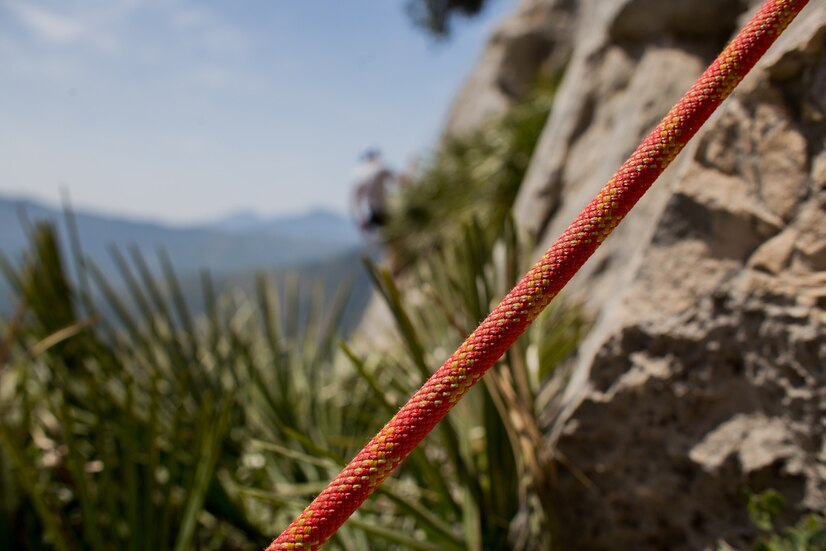When it comes to pulling heavy loads, whether it’s for industrial purposes, outdoor activities, or any other tasks that require immense strength, having the right rope is crucial. The strongest rope for pulling is a topic of great importance, and in this comprehensive article, we will delve into the world of ropes, exploring their different types, materials, and applications. So, if you are looking for the ultimate guide to selecting the best rope for pulling, look no further! The following information is brought to you by yifarope.com
Understanding the Dynamics of Rope Strength

Before we dive into the specific types of ropes, let’s take a moment to understand the dynamics of rope strength. The strength of a rope depends on various factors, including the material it is made of, its construction, and the purpose it is intended for. Different ropes are designed to withstand varying levels of tension, and choosing the right one can make all the difference in your pulling tasks.
Natural Fiber Ropes: Timeless Tradition and Utility
Hemp Ropes
Hemp ropes have been used for centuries and are well-known for their durability and flexibility. The natural fibers of hemp give it exceptional strength, making it ideal for various pulling applications such as rope for pulling trees. Additionally, hemp ropes are resistant to UV rays and abrasion, ensuring a long lifespan even in challenging conditions. While hemp ropes have been widely used historically, there are some modern alternatives that provide even greater strength.
Manila Ropes
Manila ropes are another excellent option in the realm of natural fiber ropes. Made from abaca fibers, these ropes boast incredible strength and are commonly used for heavy-duty tasks like ship mooring and industrial hauling. The rough texture of manila ropes provides a secure grip, making them well-suited for pulling tasks where a strong hold is essential.
Sisal Ropes
Sisal ropes are derived from the agave plant and offer impressive tensile strength. These ropes are commonly used in agricultural settings and are also found in construction and marine industries. Their biodegradability makes them an environmentally friendly choice for certain applications.
Synthetic Fiber Ropes: Engineering Marvels
Polypropylene Ropes
Polypropylene ropes are lightweight, floatable, and highly versatile. They are commonly used in water-based activities and applications where resistance to water and moisture is essential. When it comes to securing boats or docks, polypropylene ropes are a great choice. If you’re wondering what type of fence is most popular, however, you may need to look elsewhere. While polypropylene ropes are not as strong as some other synthetic options, they are cost-effective and ideal for light to moderate pulling tasks.
Nylon Ropes
Nylon ropes are renowned for their superior strength, elasticity, and abrasion resistance. They have high tensile strength and can withstand heavy loads, making them a popular choice in various industries. Nylon ropes are also known for their ability to absorb shock, which is particularly beneficial when dealing with sudden forces during pulling tasks.
Polyester Ropes
Polyester ropes strike a balance between strength, durability, and resistance to UV rays. They are commonly used in applications where prolonged exposure to sunlight is expected. Polyester ropes are also low-stretch, making them suitable for tasks where minimal elongation is desired.
Spectra/Dyneema Ropes
Spectra and Dyneema ropes are the superheroes of the synthetic fiber world. These ropes have incredibly high strength-to-weight ratios and are often used in high-performance applications such as offshore fishing, mountaineering, and heavy industrial lifting. They are lightweight yet stronger than steel, offering unmatched pulling capabilities.
Determining the Right Rope for Your Needs
Selecting the strongest rope for pulling depends on several factors, including the specific application, load weight, and environmental conditions. Here are some key considerations to keep in mind when choosing a rope:
Load Capacity
Understanding the weight of the load you need to pull is vital in selecting the right rope. Different ropes have varying load capacities, and using a rope that is not rated for the intended weight can lead to disastrous consequences.
Environment and Weather Conditions
Consider the environmental factors that your rope will be exposed to. Exposure to sunlight, moisture, and harsh weather can affect the lifespan and performance of the rope. For outdoor applications, UV resistance and waterproof properties are essential.
Elasticity and Stretch
For some tasks, having minimal stretch in the rope is crucial. Ropes with low elasticity are ideal for tasks where precision and control are required. On the other hand, tasks involving shock loading may benefit from ropes with high elasticity to absorb sudden forces.
Safety Factor
Always factor in a safety margin when selecting a rope. It’s essential to choose a rope with a breaking strength well above the anticipated load to prevent accidents and ensure reliability.
Conclusion
The choice of the strongest rope for pulling depends on a variety of factors, including the type of material, construction, and intended application. Natural fiber ropes like hemp, manila, and sisal have a rich history and offer considerable strength, while synthetic fiber ropes such as polypropylene, nylon, polyester, and Spectra/Dyneema have taken rope technology to new heights with their impressive performance.
When selecting a rope, consider the specific requirements of your task, including load capacity, environmental conditions, stretch, and safety factors. By choosing the right rope for the job, you can ensure optimal performance and safety, making your pulling endeavors a breeze.





